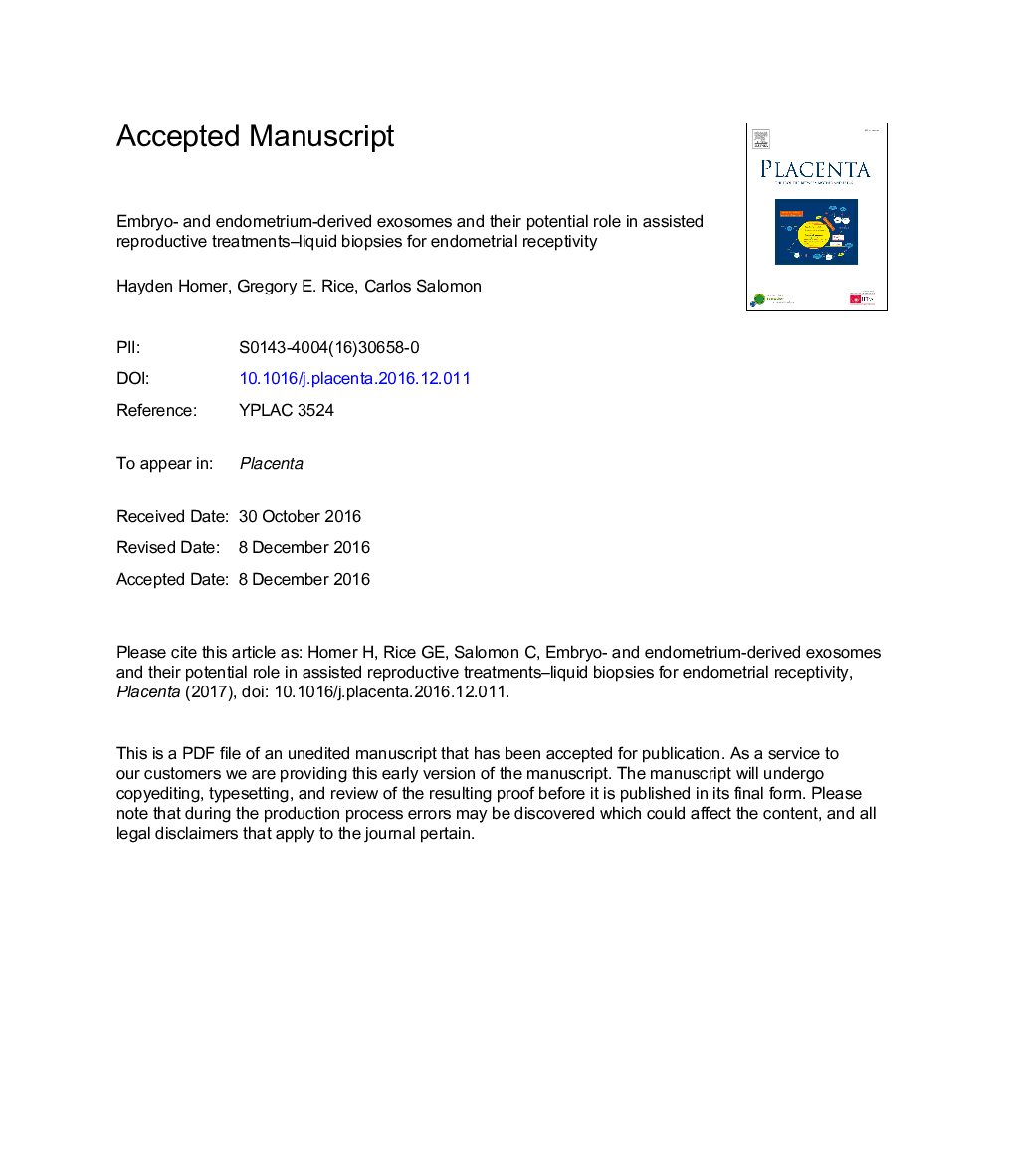| Article ID | Journal | Published Year | Pages | File Type |
|---|---|---|---|---|
| 5585971 | Placenta | 2017 | 21 Pages |
Abstract
Multiple pregnancies resulting from the transfer of more than one embryo pose a significant threat to offspring born through Assisted Reproductive Treatments (ART). Transferring one embryo at a time would eliminate this risk. However, current approaches of identifying the highest quality embryo to transfer are either unreliable (e.g. morphology assessment) or highly invasive and potentially detrimental to embryos (e.g. PGD). Approaches for non-invasive embryo selection would be a major advancement that would increase efficiency and reduce both the costs and the risks associated with ART. Exosomes are a particular subtype of extracellular vesicles (EVs) that are secreted from a wide range of cells, including placental and endometrium cells. Exosomes are very stable vesicles that contain a broad spectrum of molecules, including proteins, mRNAs and miRNAs. Very little is known about this form of cell-to-cell communication in the context of ovarian follicular biology and implantation, but emerging data suggest that exosomes secreted by the blastocyst could influence gene expression and receptivity of endometrial cells thereby controlling its own implantation. Here we review emerging findings regarding exosomal signalling in reproductive biology and the prospects for mapping blastocyst-derived exosomal profiles as a means for supporting single embryo transfer policies.
Related Topics
Life Sciences
Biochemistry, Genetics and Molecular Biology
Developmental Biology
Authors
Hayden Homer, Gregory E. Rice, Carlos Salomon,
